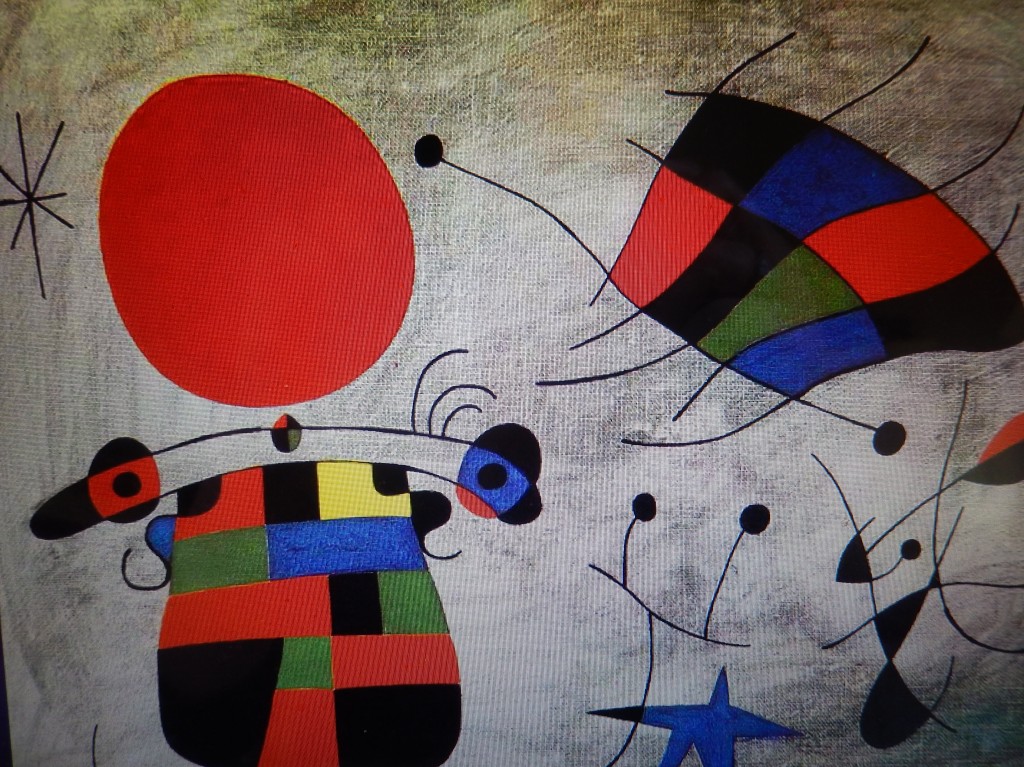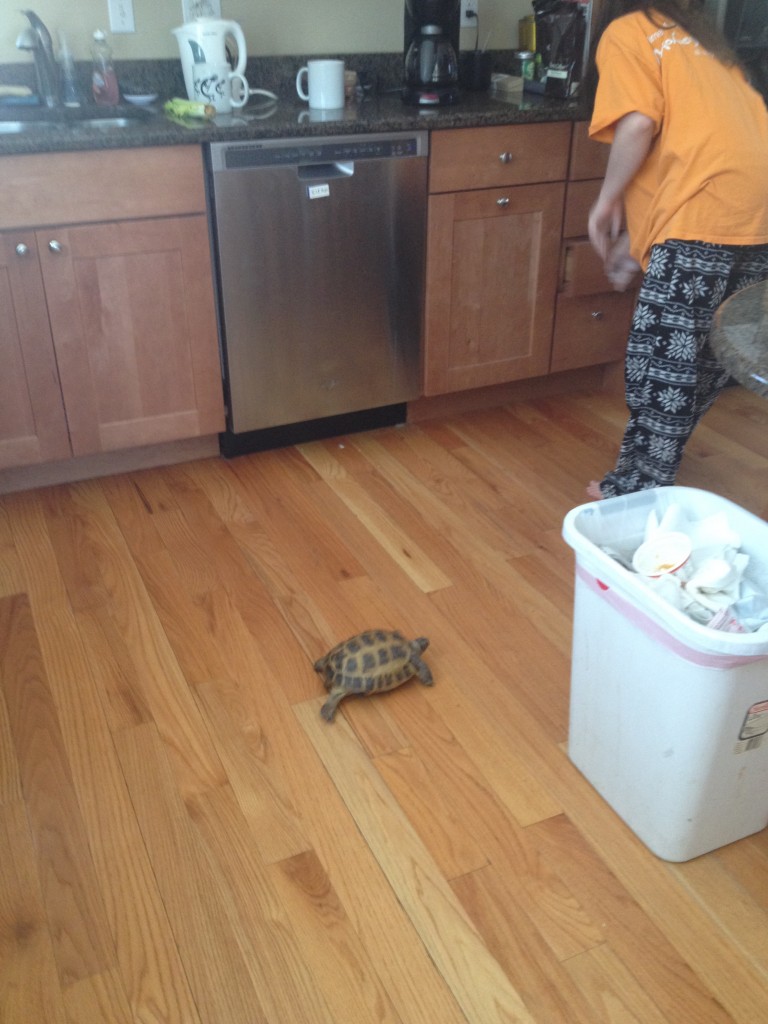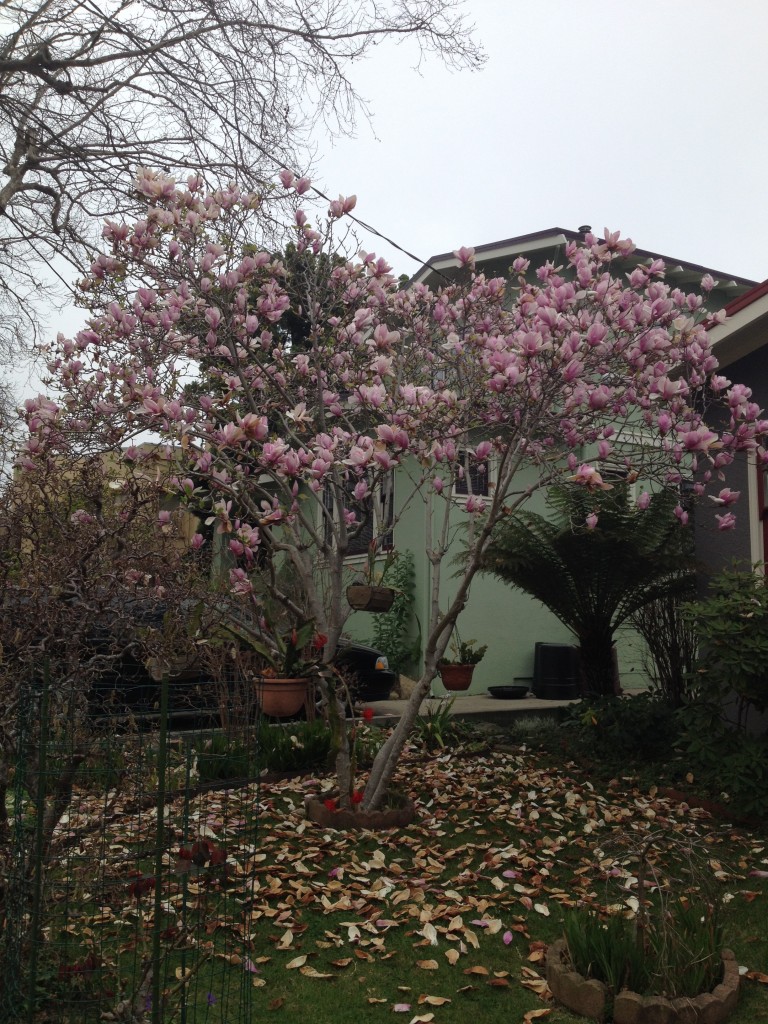6-27–My fears have been alleviated. Last night we all slept well in our first night in the tent and the kids next door didn’t wake us up too early. Thanks God for air mattresses! The weather here is perfect, with a slight breeze off the ocean, warm sun and no rain in sight.
We set off by about 10:30 for the small town of Tolosa, about a half hour inland, where we heard there were festivities and a family connection (I’ll explain that later). The town was packed with people. In addition to being a market day, as it was Saturday, today was the day of the jovenes (young people). All up and down the narrow streets were groups of kids dressed in matching T-shirts. Apparently these are clubs. There was a band playing in the old town square. We walked a little further and saw a surprising sight–people dressed like giants with scary faces were chasing young children and hitting them with a balloon-like bag. The bag made a huge popping sound on contact but it didn’t look like it hurt very much. Every time one of the giants would approach a group of kids, the kids would squeal with laughter and run away. We learned later that this is a tradition meant to “scare away” bad children from the village but now it continues as a form of entertainment. There were also large giants dressed as royalty and later on they danced through the streets spinning around. We couldn’t figure out how the people inside these enormous costumes could spin so well. More bands with drums and accordians flowed through the streets and people of all ages were enjoying free-flowing beer and vino. We wondered if the tables of beer in the main plaza were just for locals or for everyone. We weren’t brave enough to ask.
Around 1 p.m. we decided to take a little break from Tolosa and drive over the mountains to visit Peter’s ancestral village, Labeaga. We visited once 20 years ago and found that it was a tiny pueblo of about five houses and a few barking dogs. Probably it hadn’t changed much. The drive itself was a treat. The road was narrow, filled with switchbacks, and around every turn was a beautiful view of lush green forests and fields. We passed several fields of grazing horses and cows, everything looking like a postcard. At one point we came to a large plateau, probably created by some receeding glaciars thousands of years ago. Finally after about an hour and a half we descended into the town of Estella, which Peter and I stayed in 20 years ago, and we stopped to have lunch. We asked some old men in the bar if they knew where Labeaga was and they laughed: “It’s close to here,” they said, “as long as everyone hasn’t died yet.” Indeed, the town was only about five minutes away and still had the same five houses and barking dogs. We got out briefly to take a few requisite photos in front of the large sign with our last name. One man peered out of his house to examine us, but he didn’t approach us. His dog barked. Other than that the town was quiet and tranquil, surrounded by fields of softly blowing wheat. The closest large city is Pamplona, home of the famous running of the bulls but probably no one who visits Pamplona ever makes it this far. Twenty years ago we saw the running of the bulls and we even met some Labeagas. We weren’t sure exactly how they were related but they were definitely cousins of some sort.
Leaving Labeaga we headed back to Tolosa for a 6 p.m. tour of the Gorrotxategi chocolate museum. Sometime in the late 1700s Peter’s great-great-great-grandfather Jose Antiono Labeaga married into the family of the Gorrotxategis. Since the 1930s the Gorrotxategis have run a famous chocolate company with a store and museum in Tolosa. They sell their line of gourmet chocolates at upscale stores all over Spain. We enjoyed a nice tour of their museum, which had an assortment of old chocolate-making machines, and then sampled some delicious hot chocolate at their shop
We discovered the Gorrotxategi connection four years ago when researching Peter’s roots. At that time we had only traced the family tree back to his great-great grandfather, Jose Vicente, and we knew he had been an important person in the little town of Urretxu, which is not too far from Tolosa. In fact, his portrait hangs in Urretxu’s town hall because after emigrating to the U.S. sometime in the 1800s, he sent money back to the town yearly to support a school for girls. Four years ago we saw all of Jose Vicente’s letters that accompanied his money, which are carefully archived in the town records. In the letters he recounts his life in the New World in beautiful flowing script. It was amazing to step back in time and see these intimate thoughts from a family member! The town archivist was thrilled to meet us and filled us in on all his knew about the Labeagas, including the connection with the Gorrotxategis. We promised the archivist we’d keep in touch and he would update us on any further discovories.
Our night ended with some tapas with Ana, a friend of our nephew Jake. Ana was Jake’s nanny for three months two years ago, and thanks to Facebook, we easily got in touch with her. We met Ana and her parents and had some delicious croquetas and a couple of cervezas–the end to a very full day. .
6-28–As I mentioned in an earlier post, campsites in Europe are outfitted with most modern conveniences, like stores, hot showers and restaurants. Most also have laundry facilities. Today we took advantage of the washing machines and did a few loads of laundry. They even had a drier, which most Europeans don’t own at home, and this sped up the process considerably.
Campsites here are a real melting pot of European culture. There are many Danes, a lot of Spanairds of course, a few Brits and French, and a very few Americans. It’s interesting to walk through the campground and see the variety of tents and campers people use. Some have basic tents like us; others have elaborate RV setups with screened in rooms and sometimes a whole separate little structure for cooking. VW campervans are also very popular. There are a mixture of retirees, families and young backpackers. The day we arrived here was a Friday and the campground was especially full since it was a weekend. When I went to use the bathrrom Friday night it was packed with teenage girls fixing their hair and makeup to go out to town. As I write this now, on Sunday, the mood is much more subdued. Many have packed up to go home.
We had a choice today between going to San Sebastian, where in the past we’ve had the best tapas in all of Spain, or to a new town we’ve never seen that was recommended by Peter’s cousin Linda. We decided to explore the new town, called Hondarribia. Hondarribia is on the coast right on the border of France and Spain. It is about 20 minutes north of our campground. Besides a beautiful harbor, it has a wall from Roman times and a well-preserved old section. We splurged on a big lunch at a restaurant overlooking the harbor, had some ice cream at an heladeria, and then strolled around the old section. I took a lot of pictures of the quaint, older houses, which looked like something out of a fairytale, and got a lot of grief from the boys. “Put away the camera Mom,” they said.
Back at the campsite, Peter and I took a walk from the campground, which is on a bluff overlooking the ocean, into the town of Zarautz. We got into town around 8:00, the time when many Spainards are out taking their evening stroll. It stays light here until 10:30 so evenings are long and relaxed. We passed by young people and old people, most speaking Basque. The Basque language has experienced somewhat of a resurgence in recent years, and it is the primary language taught in schools here. It is totally unrelated to Spanish or any other language in the world, though it does borrow some words from Spanish. Fortunately all Basque speakers also speak Spanish, so there’s no trouble communicating. We did learn two Basque words while we were here: hello is “caixo” and thank you is eskerrik asko. We had a late night dinner around 10, a huge racion of jamon and a tortilla de bacalao–a fitting last meal as we leave Spain tomorrow for a week in France and Switzerland. .



